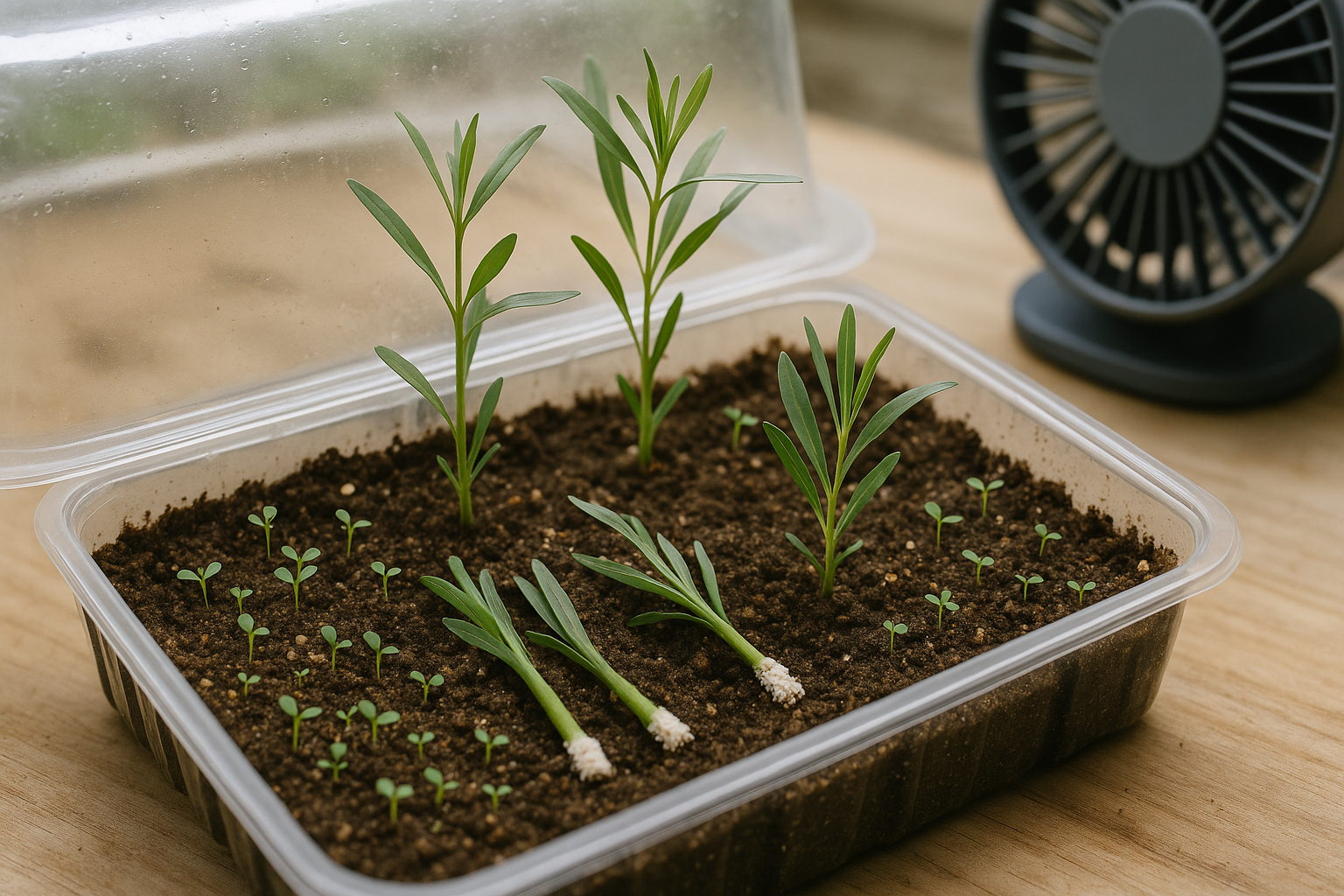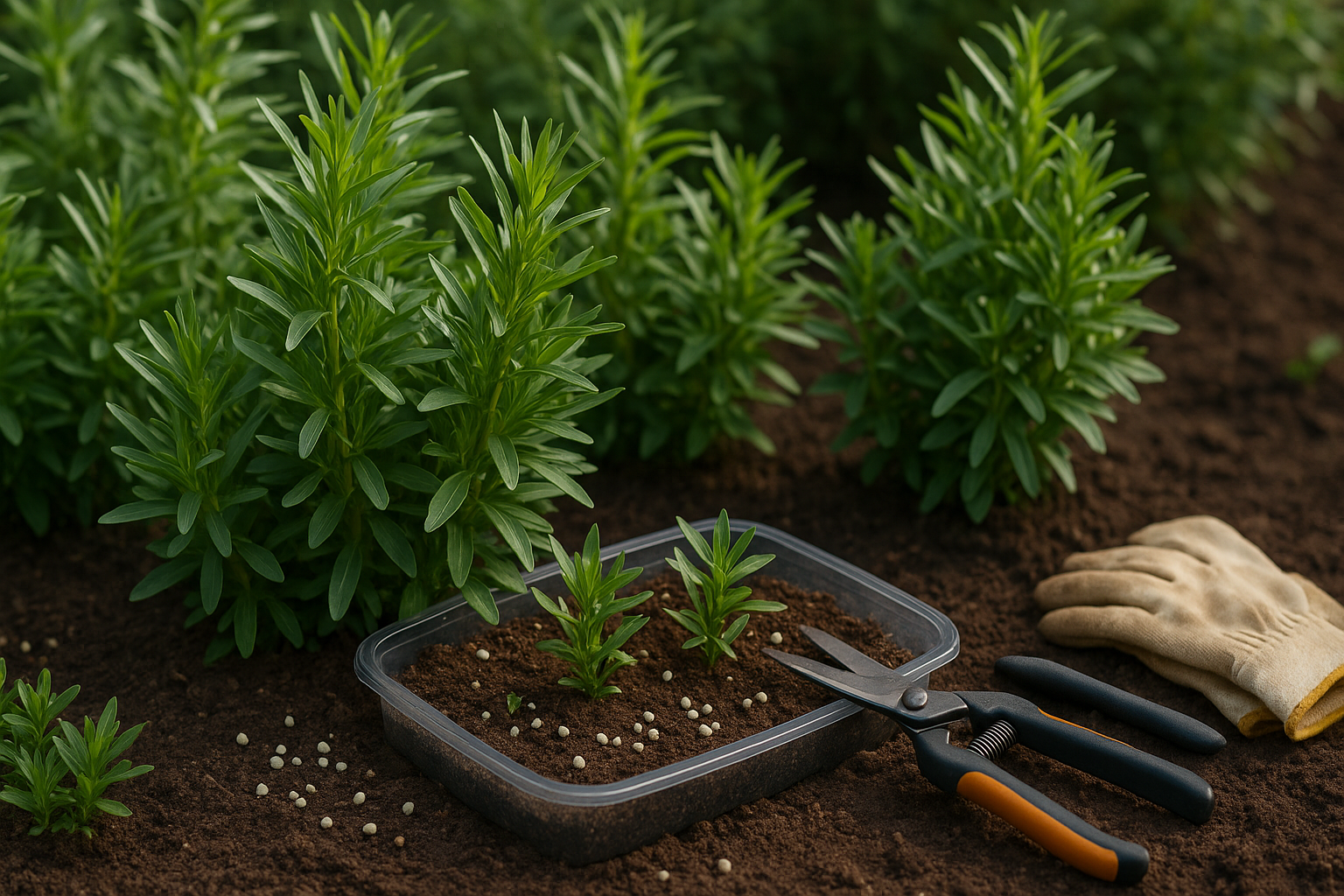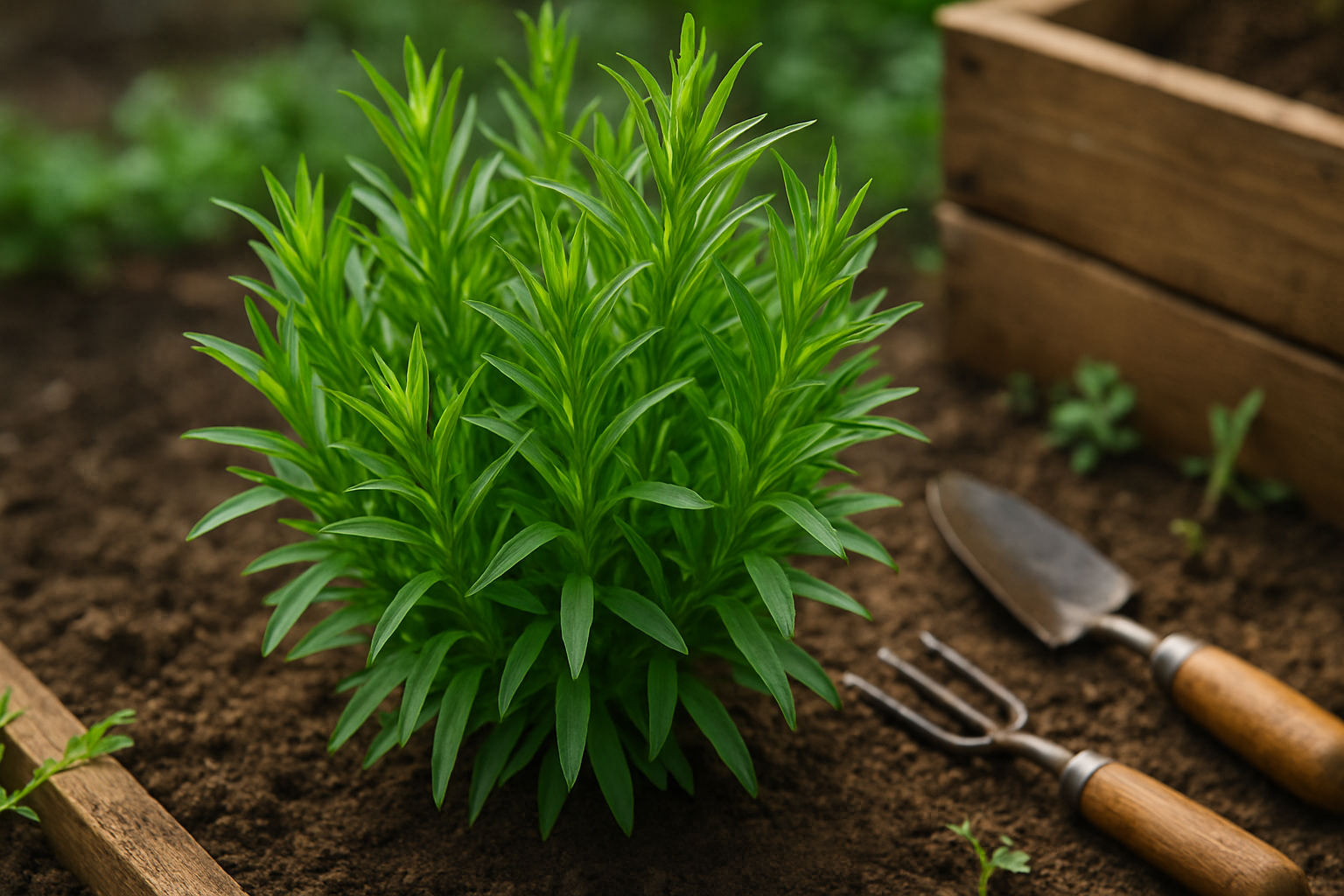Understanding Tarragon
Tarragon is a flavorful herb popular in kitchens worldwide, known for its slender leaves and distinctive anise-like taste. There are two main types: French tarragon (Artemisia dracunculus var. sativa) and Russian tarragon (Artemisia dracunculus).
French tarragon is prized by chefs for its superior flavor and is a staple in classic dishes like Béarnaise sauce, while Russian tarragon is hardier but often considered less flavorful, making it less common for culinary use.
Home gardeners and professional chefs cultivate tarragon mainly for its culinary value—fresh leaves can elevate salads, chicken, fish, and egg dishes. Notably, if you want to grow true French tarragon, you’ll need to start with cuttings or root divisions since it rarely produces viable seeds. Russian tarragon, on the other hand, can grow from seed but might disappoint in the flavor department.
Tarragon’s lifecycle is straightforward: after planting in spring, new shoots emerge and quickly develop into bushy plants by early summer. Regular harvesting through summer encourages more leafy growth, and as colder months approach, the plant will become dormant or die back.
With its perennial cycle, tarragon can grace your garden and kitchen year after year with just basic care.
Germination & Early Growth Stages

Starting tarragon successfully depends on the variety and your approach: French tarragon is best grown from cuttings because its seeds are rarely viable, while Russian tarragon is typically started from seed.
For Russian tarragon, sow seeds shallowly—no more than ¼ inch deep—in a light, well-draining potting mix. The ideal soil should feel airy and slightly sandy, with a neutral to slightly alkaline pH. Maintain consistent moisture by keeping the soil damp but not soggy, and position trays where they receive bright, indirect sunlight. Warmth speeds germination, so aim for a temperature range of 65–75°F (18–24°C). You’ll usually see seedlings emerge in 7 to 14 days.
For French tarragon, take 4–6 inch stem cuttings in spring. Strip off the lower leaves and dip the cut ends in rooting hormone before placing them in moist potting mix. Cover with a plastic dome or bag to hold in humidity and place in filtered light. Roots should develop after 2–3 weeks, signaled by new leaf growth and resistance to gentle tugging.
Signs of successful establishment in both varieties include vigorous green growth, upright stems, and steady unfolding of new leaves. Common problems like damping-off or wilting often stem from excess moisture or poor airflow. Prevent these by using sterilized containers, well-draining soil, and a fan to circulate air. Ensure you don’t overwater—if the top layer of soil feels dry, it’s time to water.
By starting with healthy cuttings or seeds and watching for these indicators, you’ll set the stage for robust, culinary-quality tarragon.
Seedling to Vegetative Growth
The journey from seedling to vegetative growth usually takes about two to four weeks after germination or successful rooting of cuttings. During this crucial period, seedlings focus on establishing their root systems and adapting to their new environment.
To support healthy development, water seedlings regularly but avoid overwatering—keep the soil moist but not soggy to prevent root rot. Initially, provide plenty of indirect sunlight or place them under grow lights for 14–16 hours a day; direct, intense sunlight can scorch delicate leaves.
Once the first set of true leaves appears (after the initial seed leaves), start feeding your plants with a diluted, balanced liquid fertilizer every 10–14 days to encourage steady growth. You’ll notice your plants transitioning into the vegetative stage as they produce more leaves, stems thicken, and their overall structure becomes bushier and more robust.
This is also when you might see roots poking through drainage holes or notice that the plant drinks water more quickly—both good signs they’re thriving. When your seedlings have at least three to four sets of true leaves and look strong and compact, they’re likely ready for transplanting outdoors or into larger containers.
For a smoother transition, start hardening them off by gradually exposing them to outdoor conditions over several days before the big move. This careful attention during early growth sets the foundation for healthy, productive plants later on.
Main Growth Phase & Maturation Timeline

Once your crop is established, the main growth phase kicks in, often marked by a noticeable surge in stem and leaf development. Most fast-growing vegetables like lettuce, radishes, and beans pick up momentum about 2–3 weeks after planting. With ideal care, you can expect them to reach harvest size in 60–90 days.
Daily, you’ll observe subtle changes—new shoots or expanded leaves—while each week, the plant’s height or fullness can increase dramatically, especially if the weather stays warm and watering is consistent.
To maximize growth, always ensure your plants have enough room; overcrowding restricts airflow and can lead to stunted development or disease. Pruning—removing dead, damaged, or crowded shoots—helps the plant focus energy on strong, healthy growth.
Fertilize every couple of weeks using a balanced, slow-release fertilizer, but avoid overdoing it: excessive nutrients can burn roots or encourage weak, leggy growth.
If you notice issues like slow progress or pale, yellowing leaves, check for common culprits such as poor soil, lack of sunlight, or water stress. Sometimes, simply loosening compacted soil, moving pots to sunnier spots, or adjusting your watering schedule can make a big difference.
Inconsistent growth might also signal a need for more nutrients; a soil test or targeted feeding with a liquid fertilizer can help. By keeping a close eye on your garden and responding quickly to changes, you’ll help your plants thrive and ensure a bountiful harvest right on schedule.
Flowering, Lifespan, and Harvest Times
Flowering in French tarragon is a rare event, mainly because most plants available to gardeners are sterile cultivars that struggle to produce flowers or seeds. This sterility is actually an advantage; when tarragon shifts its energy toward flowering and seed production, its aromatic oils diminish, leading to bland, less flavorful leaves.
French tarragon retains its signature anise-like flavor best when it’s kept from flowering, which naturally happens with these sterile varieties. For home growers, this means you get consistently tasty leaves throughout the growing season.
The best time to harvest tarragon is just before the plant begins to flower, usually in late spring to early summer. However, with French tarragon, you can pick leaves regularly since it rarely flowers. Aim to harvest in the morning after the dew has dried for peak flavor, and trim stems lightly—frequent, moderate harvests encourage bushy, vigorous growth.
French tarragon typically lives three to five years if well cared for, maintaining its best flavor and productivity during the first few seasons. To keep your plants healthy and flavorful, replace them every few years by dividing and replanting vigorous sections in early spring for a constant, fresh supply.
Tips for Faster and Healthier Growth
Healthy plant growth starts with rich, well-draining soil—mix in compost or organic matter to boost nutrients and encourage strong roots. Stick to a consistent watering schedule (usually once or twice a week for most garden plants), but always check the soil first; overwatering leads to root rot, while underwatering can stunt growth.
Watch for signs of pests or disease such as yellowing leaves, sticky residue, or holes, and treat early with insecticidal soap or neem oil for a fast fix. For bushier plants, pinch or prune back new growth regularly—this encourages side shoots and a fuller shape.
If plants are growing slowly, quick remedies include adding a balanced liquid fertilizer or gently loosening compacted soil. Avoid common mistakes like planting too close together, neglecting regular pruning, or ignoring signs of stress—these can quickly undo your hard work and slow your garden’s progress.
FAQs
If your tarragon isn’t growing well, don’t worry—it’s a common concern. Tarragon prefers well-drained soil and at least six hours of sunlight daily, so check if your plant is getting enough light and water without sitting in soggy dirt.
Yes, you can grow tarragon indoors! Just place it on a sunny windowsill or supplement with a grow light. Indoor plants often need more consistent watering and occasional feeding with a balanced liquid fertilizer.
To encourage quicker growth, trim the tips regularly—this helps the plant branch out—and keep the soil lightly moist but not wet. Avoid over-fertilizing, as this can actually slow development.
If you notice yellow leaves or weak stems, give your plant more light and improve airflow. With a little patience and the right care, your tarragon will be thriving in no time, whether in your garden or kitchen window.
